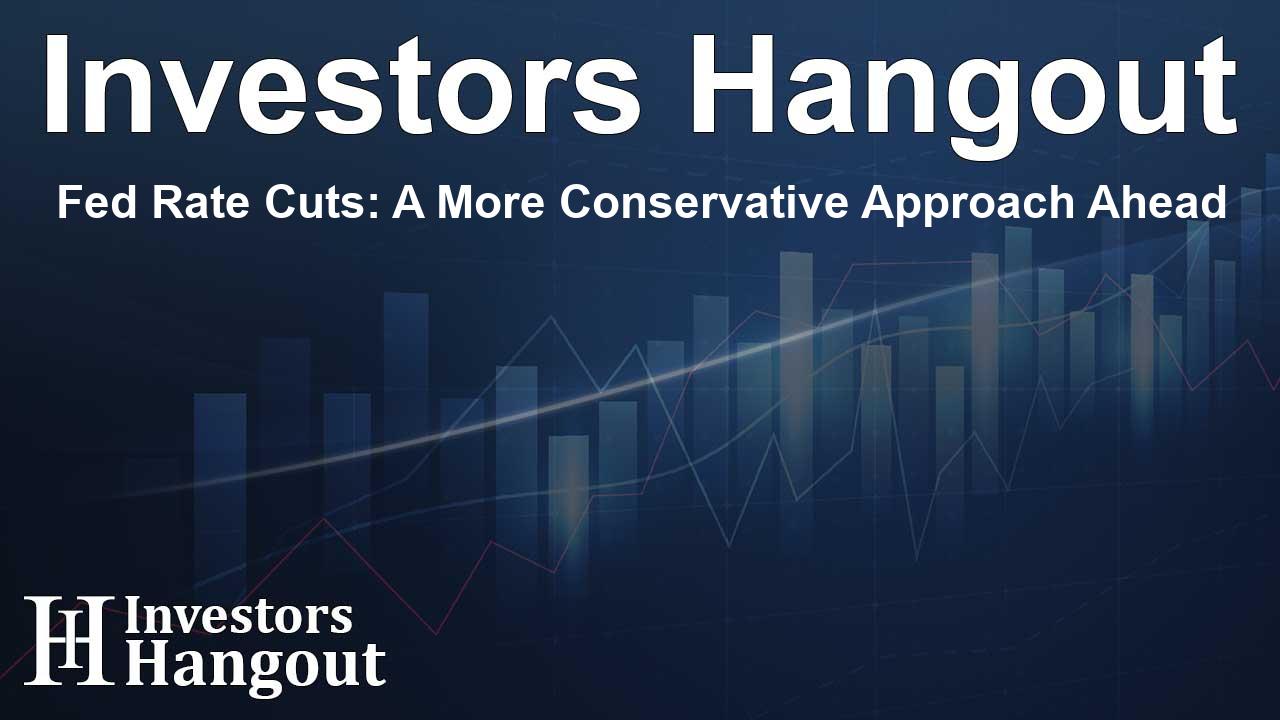Understanding the Federal Reserve's Approach to Rate Cuts
As the Federal Reserve (Fed) embarks on its anticipated rate-cutting journey, many market analysts suggest that the course may be more conservative than previously thought. The consensus among numerous investors is that substantial future cuts in interest rates may not align with the Fed's economic outlook.
Economic Conditions Influence Rate Expectations
Current economic indicators show signs of strength, prompting thoughts that lower rates may only arise as a response to potential recessions. Mohamed El-Erian, a prominent financial analyst, highlighted that prevailing market expectations might be overly optimistic regarding how low the Fed will allow interest rates to fall.
The Balancing Act of Rate Decisions
Discussion around the expected size of cuts, with investors anticipating between a 50 and 25 basis-point reduction, points to potential market volatility. Especially with the Fed set to revise its economic projections, aligning these expectations with the reality of a robust economy could limit the depths of any cuts.
Future Projections from the Fed
The Fed's estimates on the neutral rate necessary to curb inflation is projected at 2.8%. As investors adjust their expectations, they are calculating around 240 basis points of cuts by the end of next year, aiming for nearly a 3% rate.
A Historical Perspective on Rate Cuts
Historically, less aggressive cut cycles, similar to those in the 1990s, have coincided with economic strength and job stability. In contrast, dramatic cuts in 2007 and 2008 were reactions to a slumping economy. This context provides insight into how the current economic climate could shape the Fed's rate actions.
Corporate Earnings and Labor Market Stability
Healthy corporate earnings, coupled with a stable employment landscape, present a contrasting backdrop to the drastic cuts anticipated by some analysts. Ed Al-Hussainy, an interest rate strategist, pointed out this disconnect between market expectations and actual economic conditions, emphasizing low default rates and healthy revenue growth as contrary indicators to the notion of needing deep cuts.
Impacts on Investors and the Market
Even in a scenario where the Fed opts for a more conservative approach to rate cuts, it doesn't automatically signify alarming conditions for investors. In fact, stock markets, especially the technology sector, have remained buoyant, driven by the ongoing strength of AI and technology-related stocks.
Bracing for a Mixed Economic Landscape
Despite the challenges posed by stubbornly high inflation, the emerging landscape may still hold opportunities. Vishal Khanduja from Morgan Stanley shares a view of cautious optimism, suggesting that while fixed-income markets face headwinds, the broader disinflation trends remain intact, pointing toward economic resilience.
Frequently Asked Questions
What does a shallower rate-cutting cycle imply?
A shallower rate-cutting cycle means that interest rates are likely to decrease at a slower pace, reflecting ongoing economic strength and avoiding premature deep cuts.
Why is market expectation different from the Fed's stance?
The difference arises from various analyses of economic health, where the market may anticipate aggressive cuts while the Fed focuses on inflation control and economic stability.
How do corporate earnings affect rate cuts?
Healthy corporate earnings indicate a stable economy, often reducing the urgency for significant interest rate reductions that would typically respond to recessionary pressures.
What were the historical contexts for past rate cuts?
Rate cut cycles in the 1990s were conservative amidst a strong economy, while drastic cuts in 2007 and 2008 aimed to combat economic downturns during a financial crisis.
What should investors focus on amidst changing rates?
Investors should monitor inflation trends, corporate earnings, and overall economic stability, as these factors will influence the effectiveness and necessity of rate cuts.
About Investors Hangout
Investors Hangout is a leading online stock forum for financial discussion and learning, offering a wide range of free tools and resources. It draws in traders of all levels, who exchange market knowledge, investigate trading tactics, and keep an eye on industry developments in real time. Featuring financial articles, stock message boards, quotes, charts, company profiles, and live news updates. Through cooperative learning and a wealth of informational resources, it helps users from novices creating their first portfolios to experts honing their techniques. Join Investors Hangout today: https://investorshangout.com/
Disclaimer: The content of this article is solely for general informational purposes only; it does not represent legal, financial, or investment advice. Investors Hangout does not offer financial advice; the author is not a licensed financial advisor. Consult a qualified advisor before making any financial or investment decisions based on this article. The author's interpretation of publicly available data shapes the opinions presented here; as a result, they should not be taken as advice to purchase, sell, or hold any securities mentioned or any other investments. The author does not guarantee the accuracy, completeness, or timeliness of any material, providing it "as is." Information and market conditions may change; past performance is not indicative of future outcomes. If any of the material offered here is inaccurate, please contact us for corrections.
